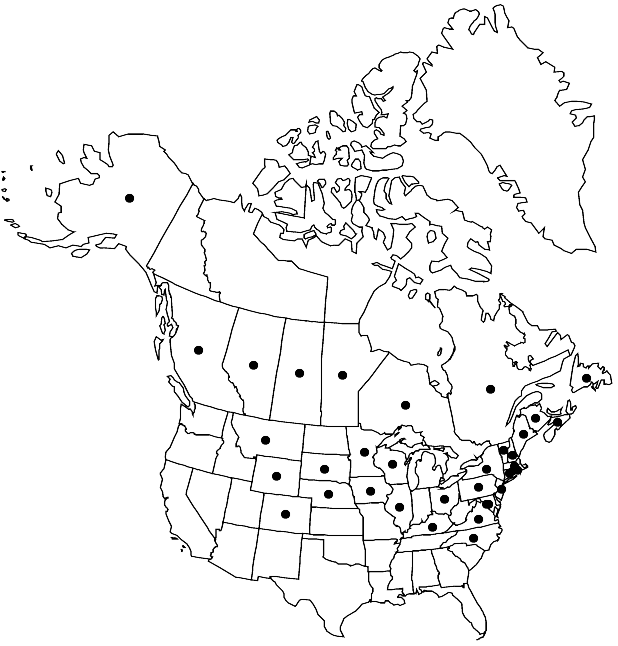Difference between revisions of "Salix pentandra"
Sp. Pl. 2: 1016. 1753.
imported>Volume Importer |
imported>Volume Importer |
||
| Line 57: | Line 57: | ||
|publication year=1753 | |publication year=1753 | ||
|special status=Weedy;Introduced | |special status=Weedy;Introduced | ||
| − | |source xml=https:// | + | |source xml=https://bitbucket.org/aafc-mbb/fna-data-curation/src/2e0870ddd59836b60bcf96646a41e87ea5a5943a/coarse_grained_fna_xml/V7/V7_34.xml |
|genus=Salix | |genus=Salix | ||
|subgenus=Salix subg. Salix | |subgenus=Salix subg. Salix | ||
Latest revision as of 22:32, 5 November 2020
Shrubs or trees, 5–15 m. Stems: branches flexible at base, brownish or yellow-green, highly glossy, glabrous; branchlets yellow-green, red-brown, or brownish, glossy, glabrous. Leaves: stipules absent or rudimentary on early ones, rudimentary or foliaceous on late ones, apex rounded; petiole deeply to shallowly grooved adaxially, 5–15 mm, with pairs or clusters of spherical glands distally or throughout, glabrous adaxially; largest medial blade hypostomatous, narrowly elliptic, elliptic, or lanceolate, 50–135 × 20–50 mm, 2–4 times as long as wide, base convex, margins slightly revolute or flat, serrulate, apex acuminate, abaxial surface pale not glaucous, glabrous, adaxial highly glossy, glabrous; proximal blade margins entire or serrulate; juvenile blade reddish, glabrous abaxially. Catkins: staminate 27–81 × 9–13 mm, flowering branchlet 9–21 mm; pistillate moderately to densely flowered, slender or stout, 29–68 × 7–15 mm, flowering branchlet 9–42 mm; floral bract 2–4 mm, apex acute or rounded to truncate, entire or toothed, abaxially sparsely hairy (mainly proximally), hairs wavy or straight. Staminate flowers: abaxial nectary 0.6–1.7 mm, adaxial nectary square, ovate, or oblong, 0.5–1.5 mm, nectaries distinct or ± connate and cup-shaped; stamens 4–10; filaments distinct, hairy on proximal 1/2; anthers ellipsoid or globose, 0.5–0.6 mm. Pistillate flowers: (abaxial nectary present or absent), adaxial nectary oblong, square, or ovate, 0.4–0.8 mm, (nectaries distinct or connate and shallowly cup-shaped), shorter than or equal to stipe; stipe 0.5–1.6 mm; ovary pyriform, beak bulged below or tapering to styles; ovules 18–22 per ovary; styles connate or distinct, 0.4–0.6 mm; stigmas flat, abaxially non-papillate with rounded tip, or slenderly cylindrical, 0.4–0.6 mm. Capsules 6–9 mm. 2n = 76.
Phenology: Flowering late May-mid Jun.
Habitat: Shores of streams and lakes, marshes, roadsides, waste places
Elevation: 0-2300 m
Distribution

Introduced; Alta., B.C., Man., N.B., Nfld. and Labr. (Nfld.), N.S., Ont., Que., Sask., Alaska, Colo., Conn., D.C., Ill., Iowa, Ky., Maine, Md., Mass., Minn., Mont., Nebr., N.H., N.J., N.Y., N.C., Ohio, Pa., R.I., S.Dak., Vt., Va., Wis., Wyo., Eurasia.
Discussion
The Ohio occurrence is based on information from T. Cooperrider (pers. comm.).
Only pistillate plants of Salix pentandra are known to occur in the flora area.
Selected References
None.